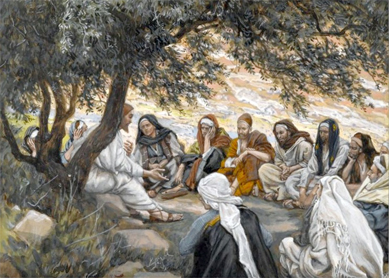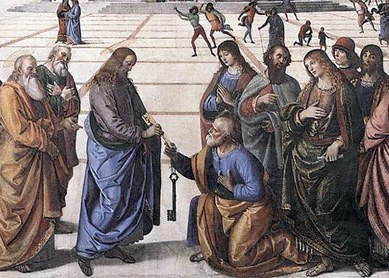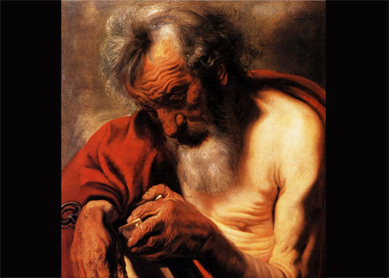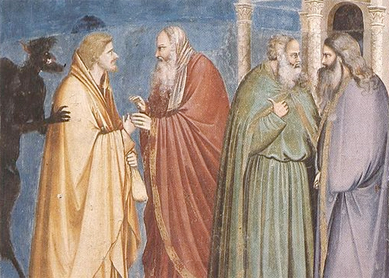The earliest of the evangelists, Mark, reports that Jesus went up the mountain and “called whom he would to himself, and they came to him. And he made them Twelve, to be with him and to be sent to preach and to have authority to cast out demons.” (
Both these later evangelists say that Jesus also called the 12 “apostles” (a term that received special currency and wider application in early Christian mission discourse, because of Paul’s claims with regard to his own right to be called an apostle, though not a member of the Twelve (
However, the evidence suggests that a distinctive group—simply known as the Twelve—existed already during the ministry of Jesus and continued to be influential in the earliest days of the post-resurrection community in Jerusalem (
One saying of Jesus, which Matthew and Luke report in different settings, supplies the key to the Twelve’s importance. Peter asks what reward he and the others will have, and Jesus answers, “You who have followed me will also sit on twelve thrones, judging the twelve tribes of Israel” (
Long before Israel had become a monarchy under David and Solomon, it consisted of a loose configuration of tribes who gathered together at a central sanctuary to renew their covenant commitment to the God who had liberated them from slavery (
However, the tribal confederation could not resist the centralizing power of the monarchy, and the subsequent loss of tribal territories to the Assyrians and Babylonians gave rise to an expectation of restoration of the allotted tribal lands in later Jewish descriptions of the messianic age.
Jesus’ choice of the Twelve, therefore, demonstrates his claims about the significance of his own movement. The memory of its origins was important to nascent Christianity, even though it did not retain the institution of the Twelve as part of its developing structures among the Gentile churches.
It is surely significant that later Judaism also drew on the symbolism of the Twelve by allowing the sign of the zodiac to adorn some synagogue floors as late as the fifth century C.E. This may have been a subtle form of religious competition between Jews and Christians in late antiquity, both sides claiming to have been founded on the symbolic association of the number 12. Whereas the Jews could point to the cosmic structure of the stars and seasons, the Christians recalled the action of Jesus in choosing 12 founding members and associated them with Israel’s tribal foundation story.
Bibliography
- Meier, J.P. “The Existence and Nature of theTwelve.” Pages 125-197 in A Marginal Jew : Rethinking the Historical Jesus. Vol. 3 of Companions and Competitors. New York and London: Doubleday, 2001. With up-to-date bibliography in the ample notes.
- Freyne, Sean. The Twelve Disciples and Apostles. An Introduction to the Theology of the First Three Gospels. London: Sheed and Ward, 1970.





